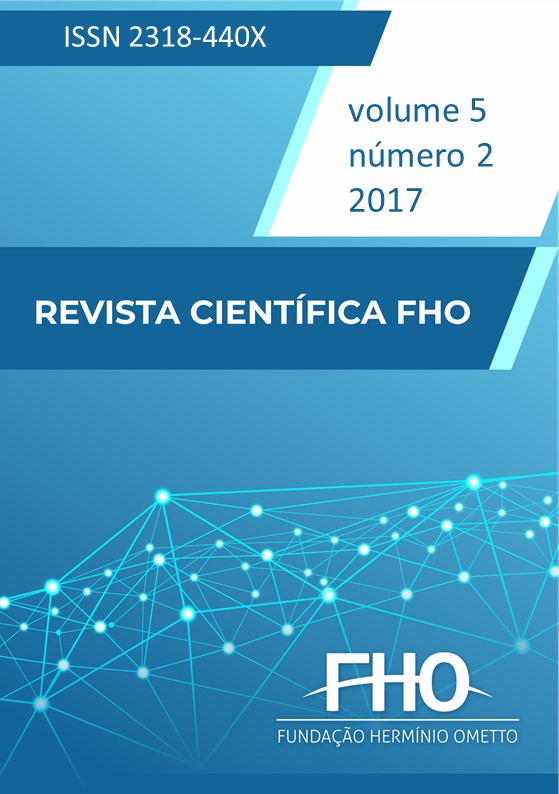Resumo
Em um mundo cada vez mais competitivo, os padrões de aparência física tornaram-se um aspecto importante na sociedade e as hipercromias, principalmente as faciais, causam alguns transtornos ao bem estar do indivíduo na sociedade. As hipercromias são desordens de pigmentação que tem origem numa produção exacerbada de melanina. Surgem por diversos fatores como: envelhecimento, alterações hormonais, inflamações, exposição solar, dentre outros. Geralmente, as hipercromias de pele são uma condição difícil de tratar, então, observa-se uma tendência em indicar procedimentos combinados para o tratamento das mesmas. O microagulhamento é uma opção de tratamento para várias disfunções estéticas da pele, como os problemas de pigmentação, rugas, acne, cicatrizes e, rejuvenescimento facial, além de potencializar a permeação de ativos cosmetológicos, uma vez que as microlesões facilitam a absorção do ativo. Outra opção de tratamento são os alfahidroxiácidos, que são peelings químicos eficientes no tratamento de rugas, desidratação, espessamento e pigmentação irregular da pele. Já os cosméticos despigmentantes possuem princípios ativos destinados a clarear a pele, atenuando as hipercromias. A ação de tais princípios ativos acontece por diferentes mecanismos de ação, porém todos estão ligados à interferência na produção ou transferência de melanina. O objetivo deste estudo de caso foi analisar a eficácia da ação combinada do microagulhamento associado a ativos clareadores no tratamento de manchas hipercrômicas. O estudo contou com um voluntário do gênero feminino, com idade de 31 anos, apresentando manchas hipercrômicas na região malar, diagnosticada e avaliada através de anamnese facial. Logo após, foram realizadas as sessões de microagulhamento e clareamento, com frequência de 01 sessão por semana, com duração de 01 hora, totalizando 10 sessões. Foi possível concluir que a terapia combinada proposta neste estudo de caso foi eficaz tanto no clareamento das hipercromias, como na melhora do aspecto geral da pele.
Referências
ARAUJO, I. L.; MEIJA, D. P. M. Peeling químico no tratamento das hipercromias. Faculdade Cambury Bio Cursos, 2014. Disponível em: http://portalbiocursos.com.br/ohs/data/docs/18/87__Peeling_quYmico_no_tratamento_das_hipercromias.pdf. Acesso em: 15 nov. 2016.
BERGMANN, C. L. M. S.; BERGMANN, J.; SILVA, C. L. M. Melasma e Rejuvenescimento Facial com uso de peeling de ácido retinóico a 5% e microagulhamento: caso clínico. 2014. 24 f. Disponível em: http://clinicabergmann.com.br/wpcontent/uploads/2015/01/ARTIGOPEELING.pdf. Acesso em: 30 out. 2016.
CASAVECHI, A. M.; SEVERINO, J. C.; LIMA, C. R. J. A Utilização da Vitamina C e do Peeling de Diamante no Tratamento do Melasma Facial: um estudo comparativo. V Encontro Científico e Simpósio de Educação UNISALESIANO, Lins, Outubro/2015. Disponível em: http://www.unisalesiano.edu.br/simposio2015/publicado/artigo0240.pdf. Acesso em: 23 abr. 2017.
CAYE, M. T.; et al. Utilização da vitamina C nas alterações estéticas do envelhecimento cutâneo. Universidade do Vale do Itajaí - UNIVALI, p. 1-13, Balneário Camboriú, 2008. Disponível em: http://siaibib01.univali.br/pdf/Mariluci%20Caye%20e%20Sonia%20Rodrigues.pdf. Acesso em: 21 mai. 2017.
DANTAS, S. F. I. M.; FELIX, V. C. O. Tratamento para Hiperpigmentação Pós Inflamatória causada por laser de CO2 fracionado: caso clínico. Anais do II Pesquisar, Goiânia, 2013. Disponível em: http://www.faculdadealfredonasser.edu.br/files/pesquisa/Hiperpigmenta%C3%A7%C3%A3o%20p%C3%B3s%20Inflamat%C3%B3ria%20(1).pdf. Acesso em: 15 nov. 2016.
DRAELOS, Z. D. Dermatologia cosmética: produtos e procedimentos. São Paulo: Santos, 2012.
GONCHOROSKI; D. D., CORREA, G. M. Tratamento de hipercromia pós-inflamatória com diferentes formulações clareadoras. Rev. Infarma, v.17, n. 3/4, 2005.
KLAYN, A. P.; LIMANA, M. D.; MORAES, L. R. S. Microagulhamento como agente potencializador da permeação de princípios ativos corporais no tratamento de lipodistrofia localizada: estudo de casos. In: ENCONTRO INTERNACIONAL DE PRODUÇÃO CIENTÍFICA CESUMAR – EPCC, 8, 2013, Maringá. Anais Eletrônicos, Editora Cesumar, 2013. p. 1-5. Disponível em: http://www.cesumar.br/prppge/pesquisa/epcc2013/oit_mostra/aline_prando_klayn.pdf. Acesso em: 23 out. 2016.
LIMA, A. A.; SOUZA, T. H.; GRIGNOLI, L. C. E. Os benefícios do microagulhamento no tratamento das disfunções estéticas. Revista Científica da FHO|UNIARARAS, v. 3, n. 1/2015.
LIMA, E. V. A.; LIMA, M. A.; TAKANO, D. Microagulhamento: estudo experimental e classificação da injúria provocada. Surgical & Cosmetic Dermatology, v. 5, n. 2, p. 110-114, 2013.
MENEZES, K. S.; et al. Comparação da eficácia entre o peeling químico e peeling de diamante associado aos ácidos mandélico e glicólico. Interdisciplinar: Revista Eletrônica da UNIVAR, v. 1, n. 15, p. 111-114, 2016.
MILREU, P. G. A. Cosmetologia. São Paulo: Pearson Education do Brasil, 2012.
MONTEIRO, E. O. Melasma: abordagem tópica. R.B.M. Especial Cosmiatria. Moreira Jr Editora, v. 69, p. 12-15, jun.2012.
PEREIRA, A. M. V.; MEJIA, D. P. M. Peelings químicos no rejuvenescimento fácil. Faculdade Cambury Bio Cursos, 2016. Disponível em: http://portalbiocursos.com.br/ohs/data/docs/18/96__Peelings_quYmicos_no_rejuvenescimento_facial.pdf. Acesso em: 23 abr. 2017
PINTO, B. S.; ROSA, S. F.; SILVA, D. Peelings químicos faciais utilizados em protocolos estéticos. Univali, Balneário Camboriú, 2011. Disponível em: http://siaibib01.univali.br/pdf/Bruna Pinto, Samanta da Rosa.pdf. Acesso em: 21 nov. 2016.
PONTES, C.G.; MEIJA, D.P.M. Ácido Kójico no Tratamento do Melasma. Faculdade Cambury Bio Cursos, 2014. Disponível em: http://portalbiocursos.com.br/ohs/data/docs/18/113__Ycido_KYjico_no_Tratamento_do_Melasma.pdf. Acesso em: 30 out. 2016.
RIBEIRO, C. J. Cosmetologia Aplicada a Dermoestética. 2. ed. São Paulo: Pharmabooks, 2010.
SOUZA, V. M. Ativos Dermatológicos. v. 2, São Paulo: Tecnopress, 2003.
SOUZA, V. M.; JUNIOR, D. A. Ativos Dermatológicos: v.7. São Paulo: Pharmabooks, 2011.
TEDESCO, I. R.; ADRIANO, J.; SILVA, D. Produtos cosméticos despigmentantes nacionais disponíveis no mercado. Univali, Balneário Camboriú, 2007. Disponível em: http://siaibib01.univali.br/pdf/ionice remiao tedesco.pdf. Acesso em: 23 out. 2016.

Este trabalho está licenciado sob uma licença Creative Commons Attribution-NonCommercial 4.0 International License.
Copyright (c) 2017 Maria Cristiana de Moura; Jackeline Miranda; Laura Cristina Maretto Esquisatto Grignoli; Janaína de Cássia Segantin
